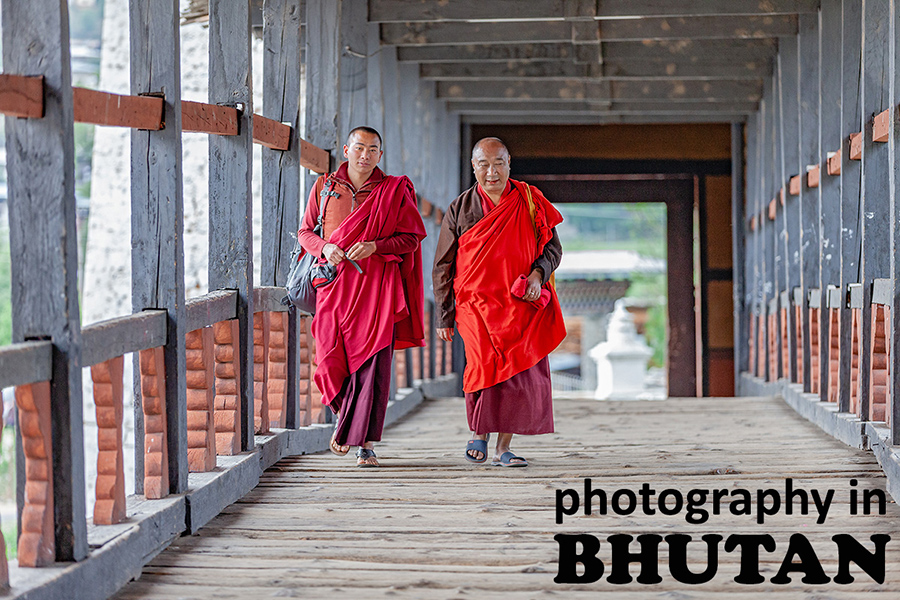
Bhutan has been known for its focus on nurturing a happy society. With its idea of ‘Gross National Happiness’, a focus on nourishing its cultural roots and a policy towards sustainable economics, the country has attempted to tread a path of balance between embracing a modern way of life and traditional values.
I have been traveling to Bhutan for five years now, trying to understand its pulse and learning from its composure, while also enjoying the country’s beautiful mountainous landscapes.
Every year, we organize a week-long mentored photography tour Bhutan, which gives you an up-close glimpse and understanding of country’s rich culture and heritage. The tour is a excellent window to the life and landscapes of the Himalayan region. The mentored photo-journey equips you with a keen understanding of life and takes you through the art of telling stories with your images. Discover what it takes to create unique images that stand apart from cliche, have your own unique signature and makes a strong visual impact. To be a part of this unique photography tour, visit “Travel Photography Tour to Bhutan” to know more details and sign up.
In these years, I have photographed many aspects of Bhutan — the genial monks, smiling people working hard in the fields, ebullient children in the villages and monasteries, mountain slopes fluttering with prayer flags and beautiful stupas, fortresses glittering with flood-lights in the evening sky and dazzling snow-covered peaks in the brilliant morning light.
Dochula, Bhutan – Sunrise over Snow Clad Peaks
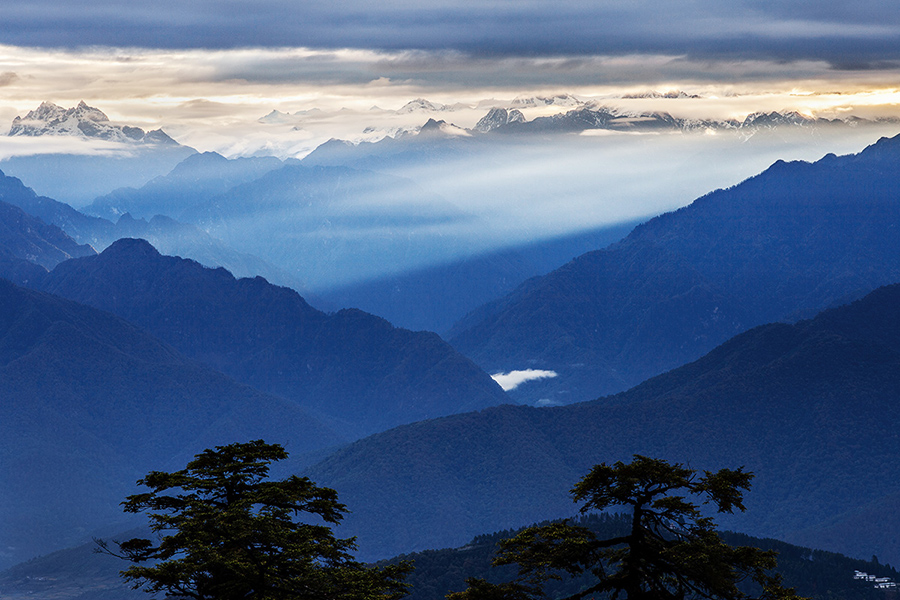
Beautiful sunrise over the mountain landscapes at Dochula, Bhutan.
I have immensely enjoyed freezing these facets of Bhutan. It’s a meditative experience observing the country’s pace of life that attempts to harmonize with material and spiritual wealth. These are images of everyday Bhutan, it’s beautiful people juxtaposed against the majestic Himalayas landscapes.
Simple Rural Life Yet the biggest smiles of people in Bhutan
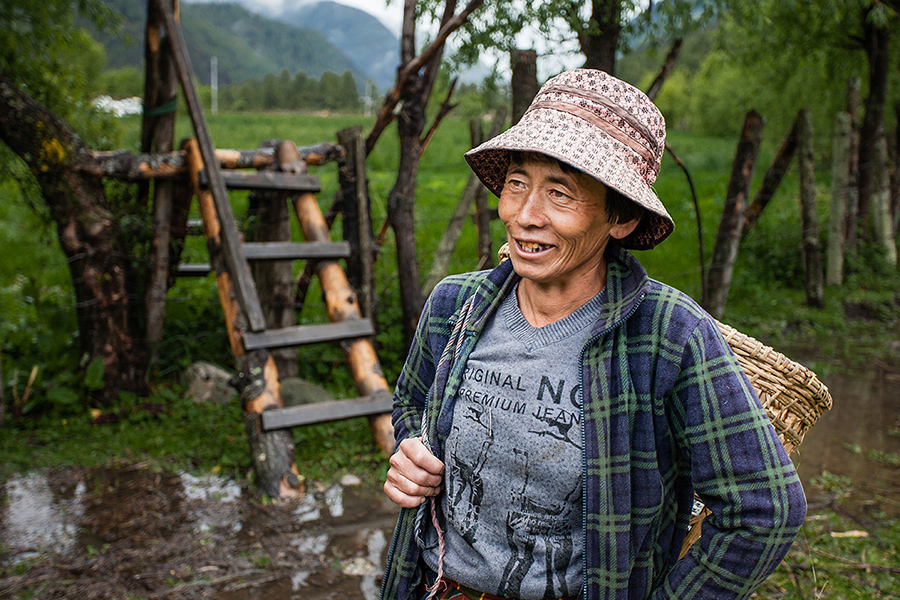
A lady working on her farm in a village in Bhutan where smiling is a way of life
In these journeys, I have had the joy of visiting many small villages in remote regions of Bhutan, gallivanting in paddy and vegetable fields, watching women tending to the soil or reaping the harvest. I had the pleasure to stop for many long conversations, understanding their crop cycles and appreciating the fact that most of the country’s produce is organic.
Bhutan – Life In The Slow Lane
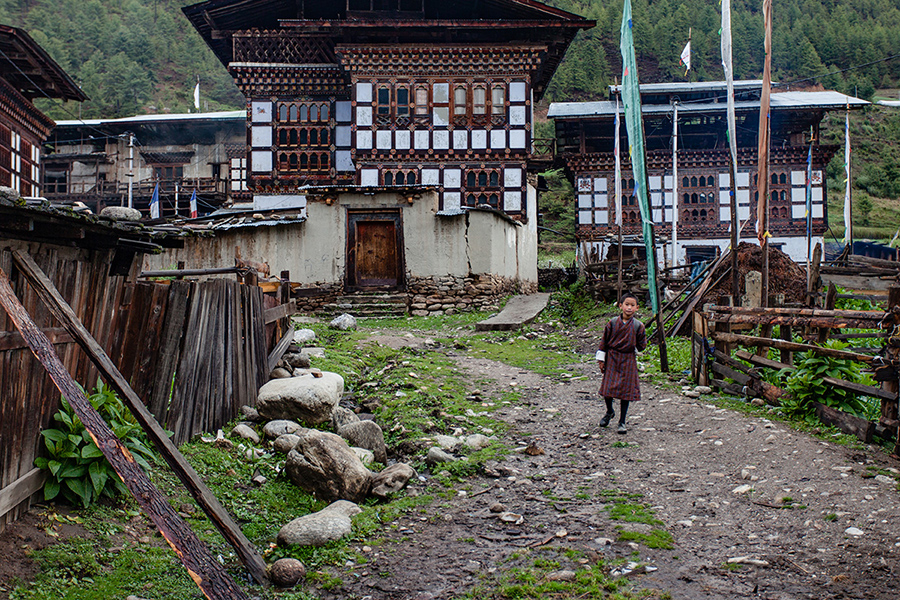
A village in Bhutan.Much of Bhutan is rural. Most valleys are settled by small hamlets with a few scores of houses surrounded by farms. Nearly all the houses and other buildings across Bhutan are built to confirm to traditional architecture highlighted by painted wooden windows. Old rural homes are usually two-storied mud structures, with animals and storage area taking up the ground-level and the family staying at the upper level.
Buddhism, practices and religious sites in Bhutan will take your breath away
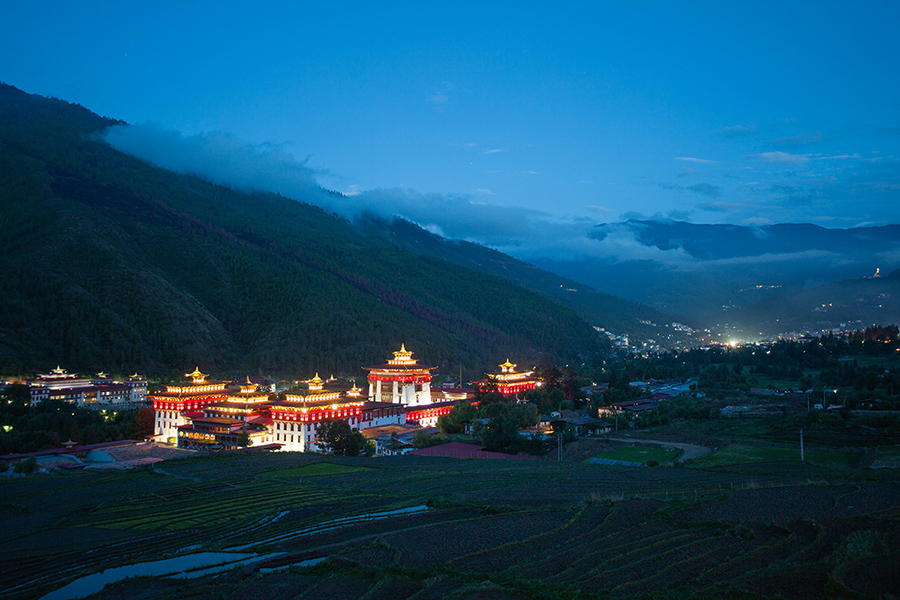
The dzong at Thimphu, Bhutan.
The epitome of Bhutan’s traditional architecture is the dzongs or fortresses. Dzongs are administrative and monastic centers located in each of the twenty districts of Bhutan. They are more often than not the largest structure in the district. They are usually built with a thick mud-wall strong enough to deter the invading Tibetan armies that once attacked the power-centers of the region. In the center of every dzong is a tall tower, which housed temples and monastic institution. They are built using traditional knowledge of masonry and roofing, often without a detailed blue-print, all coming together without using a single nail.
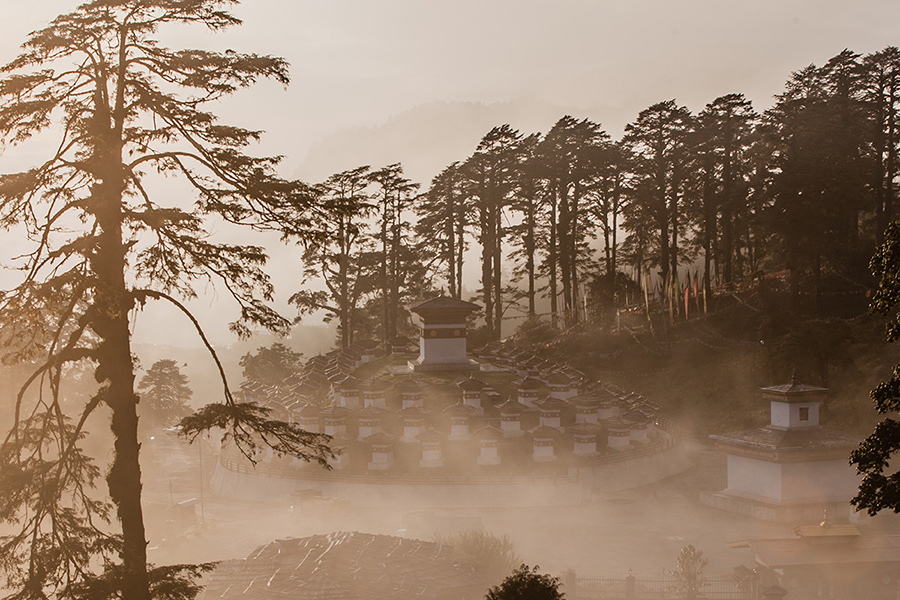
The 108 chortens (stupas) at Dochula Pass, Bhutan.
Another common architectural feature in the landscape of Bhutan are the chortens, more widely known as stupas. They are normally found at the entry to the villages, near the temples and at strategic locations across the country. The Bhutanese stupa differ structurally from the ones seen in the neighboring countries.
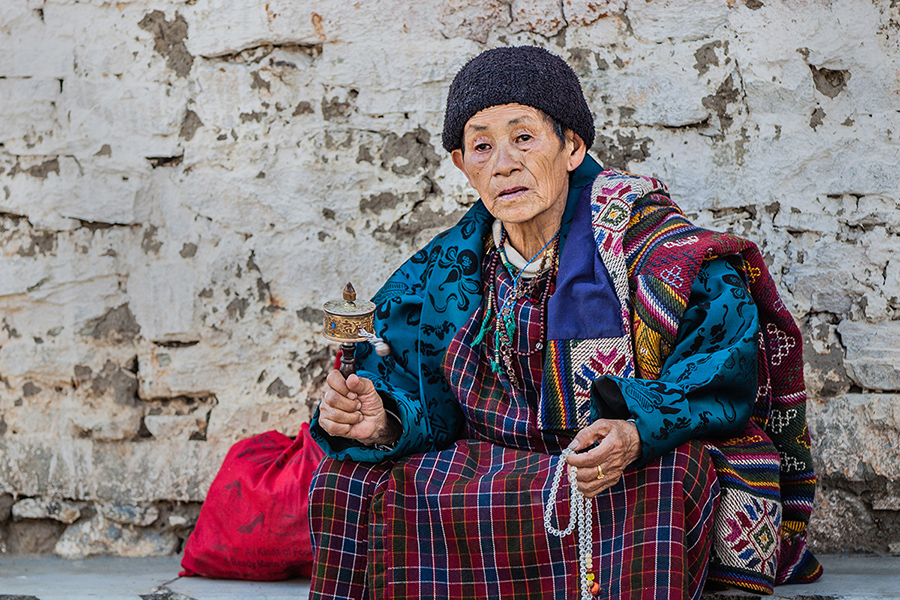
A lady turning the prayer wheels.
Buddhist traditions and values are strongly integrated into the everyday lives of people in Bhutan. As people get older, they dedicate considerably longer time of their day in Buddhist practices. In temples, monasteries and also in other places, it is not uncommon to see elderly people spending their entire day turning prayer wheels or indulged in other ritual practices.
Simple Joys Of Life Like Young Monks Playing Soccer
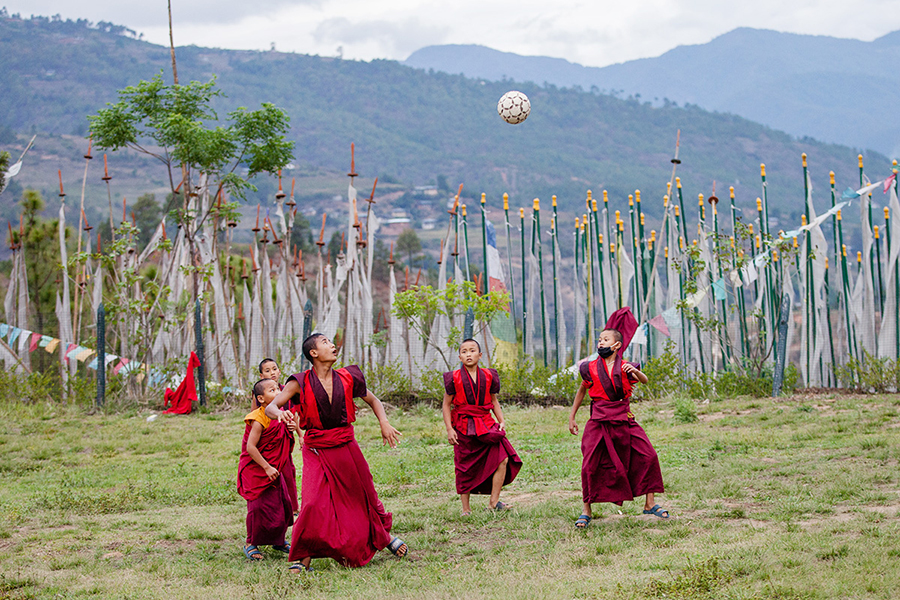
Young monks play football at a small village in Bhutan.
It’s also common to find monks everywhere in Bhutan. The education of a monk begins at a very young age. Families often send a child to monastic institutions. While the process of becoming a monk is a rigorous one, these young ones will also get some time to let their hair down. I have had the occasional joy of joining them on some games. Turns out, my football needs a lot of work!
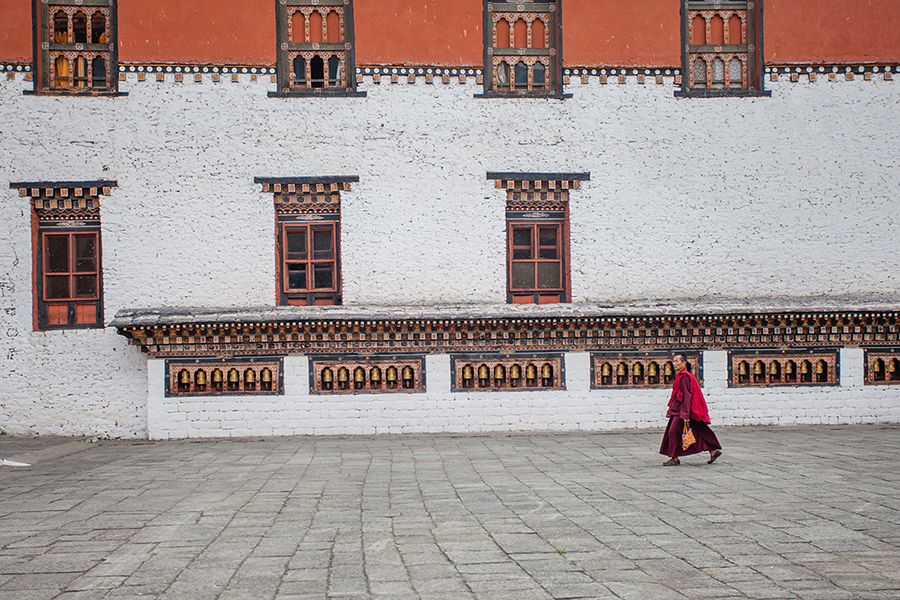
A monk walks past prayer wheels inside a dzong in Bhutan.
In Bhutan, the dzongs serve as important religious and monastic centers, where monks live in large numbers. Located inside the dzongs are also temples where prayers and rituals are performed regularly. In Bhutan, the monastic body plays an important role in the way of life, and perhaps has a significant say in matters of administration. The fact that district administrations and monastic bodies share the space inside a dzong is an indication of how Buddhism is ingrained into all aspects of Bhutan.
Tiger Nest Monastery in Bhutan, Where Mountains, Monks & Mysteries meet
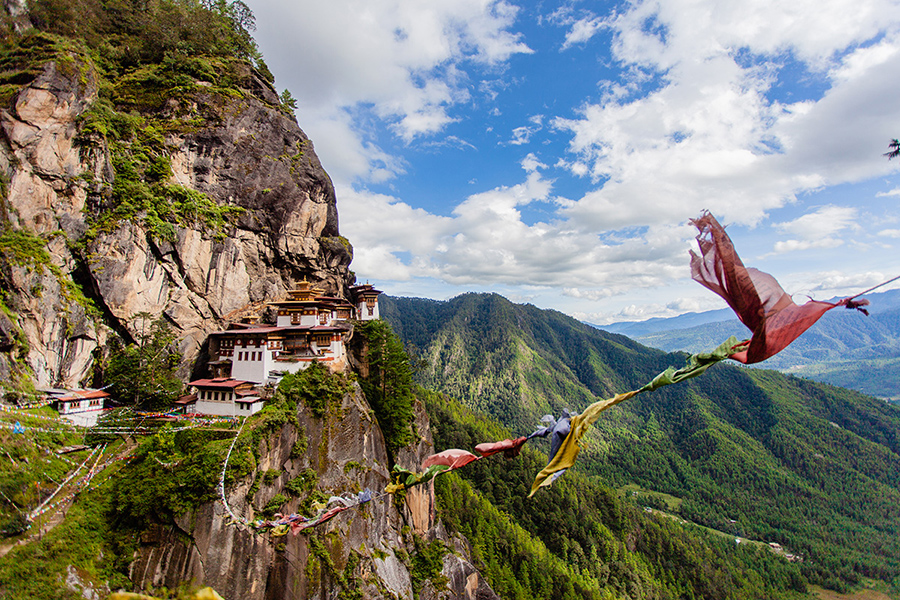
Prao Taktsang, more widely known as Tiger’s Nest monastery.
Perhaps the most iconic and well-known symbol of Buddhism in Bhutan is Paro Taktsang, better known to visitors as Tiger’s Nest monastery. This incredible structure is hanging on a ledge in the middle of a steep vertical cliff, located about 10,000 feet above sea-level. In the monastery is a cave, where Guru Padmasambhava is said to have flown in on a tiger and meditated for months. This is an important pilgrimage center for people of Bhutan, and in recent years, has been a must-see location for visitors to Bhutan.
View of the Magnificent Mountain Peaks of Bhutan Himalayas
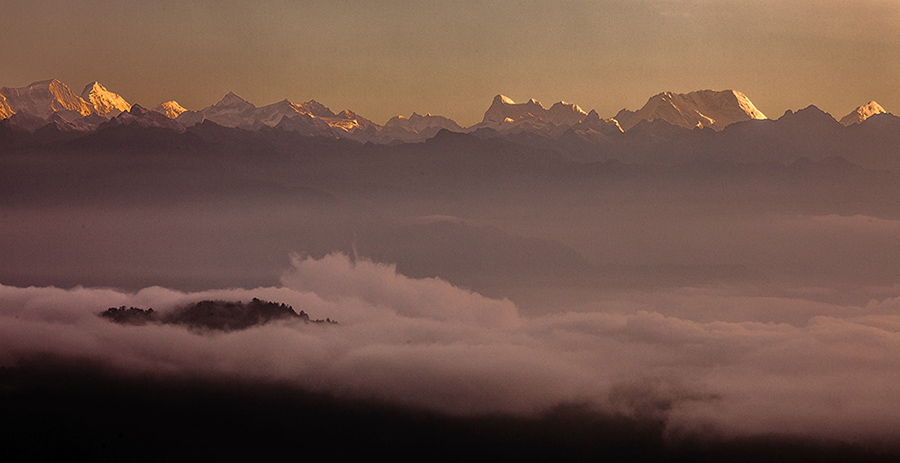
Mountainous landscapes of Bhutan.
With its ingrained inclination to slow-paced life, with the nation’s commitment to the happiness of its people and its people’s commitment to Buddhist values and traditions, Bhutan is an inspiration for rest of the world to follow. The country’s willingness to remain carbon negative as they open up to the rest of the world and their intent to preserve their pristine mountain landscapes is a lesson we all must learn from. At a personal level, it has such a strong influence on me that I find myself more content and joyful during the days I spend in Bhutan. And it’s a state of mind that lingers long after I leave the country!
Every year, we organize a week-long mentored photography tour Bhutan, which gives you an up-close glimpse and understanding of country’s rich culture and heritage. The tour is a excellent window to the life and landscapes of the Himalayan region. The mentored photo-journey equips you with a keen understanding of life and takes you through the art of telling stories with your images. Discover what it takes to create unique images that stand apart from cliche, have your own unique signature and makes a strong visual impact. To be a part of this unique photography tour, visit “Travel Photography Tour to Bhutan” to know more details and sign up.
